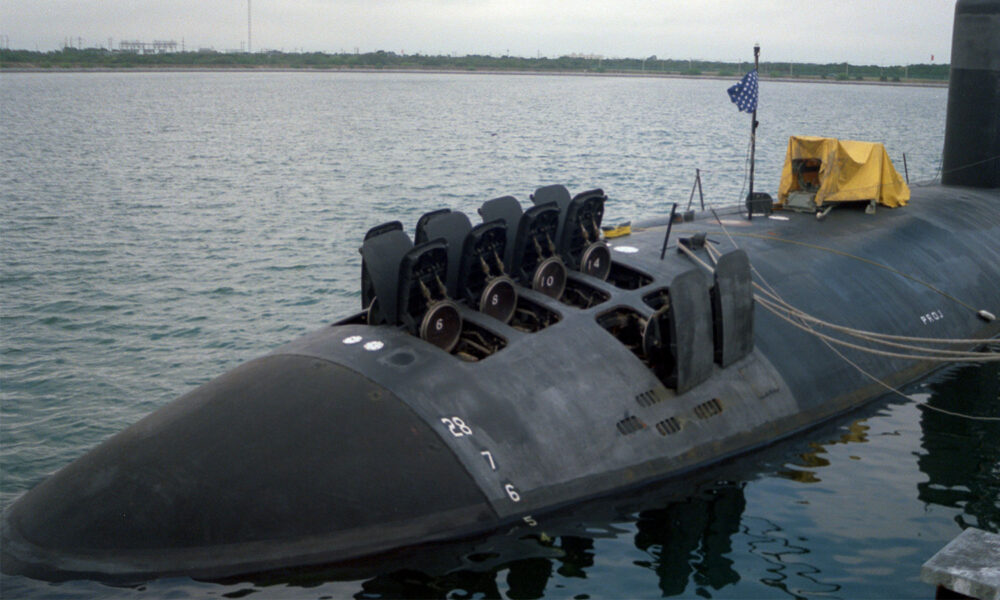This week Congress will finish the National Defense Authorization Act (NDAA), the annual bill that provides its views on defense policy and its first crack at setting the military budget. Notably, the final Fiscal Year 2023 NDAA includes funding for a new nuclear weapon known as the nuclear-armed sea-launched cruise missile (SLCM-N) that the Biden administration wants to cancel. How did we get here?
1991 to 2016: a weapon withdrawn and eventually retired
Back in 1991, then-President George H. W. Bush withdrew from deployment the nuclear version of the Tomahawk Land Attack Missile (TLAM-N)—a cruise missile carried on US Navy attack submarines—as part of a far-reaching post-Cold War initiative to reduce the US nuclear arsenal, one that sparked Russia to follow suit. Ten years later, the Navy wanted to formally retire the nuclear Tomahawk as part of President George W. Bush’s 2001 Nuclear Posture Review (NPR) but were overruled by civilians in the White House.
So the TLAM-N sat in storage, unneeded and largely unwanted, until the Obama administration’s 2010 NPR, which did decide to retire the weapon, with full Navy support. By 2013, it was gone from the Navy’s operational plans.
2017: enter Trump
The Trump team sought to distinguish itself from its predecessor. One example was their 2018 NPR, which called for two new nuclear weapons. The first was a new, lower-yield submarine-based warhead, already deployed. The second was a new sea-launched cruise missile, the SLCM-N, recreating the capability the Navy happily terminated. The NPR argued it would “provide a needed non-strategic regional presence, an assured response capability.” In Fiscal Year 2019 (FY19), the program got a modest $1 million to study designs for the weapon. In FY2020, that went up to $5 million. Somewhat surprisingly, no funding was requested for FY21.
2021: the Biden administration
It might thus be unexpected that the Biden administration’s FY2022 budget request included $15 million for the SLCM-N. It was apparently because the newly-installed Biden team largely moved forward with a budget initially drafted by the Trump administration. But signs of dwindling support quickly emerged. In May 2021, the Congressional Budget Office gave the first public cost estimate for the SLCM-N, suggesting it would cost $10 billion between 2021 and 2030, while noting the estimate was “highly uncertain.”
In a June 2021 memo, the then-acting Secretary of the Navy called for canceling the program, sending a clear signal that the SLCM-N was not a high priority for the Navy compared to other acquisition programs.
In March 2022, a senior official briefed reporters that the administration was cancelling the SLCM-N. The President’s Budget Request for Fiscal Year 2023, released on March 28, made it official. The Navy declared that the SLCM-N was “cost prohibitive” and the production “schedule would have delivered capability late to need.”
On the same day as the budget release, the Pentagon also delivered a classified version of the NPR to Congress. Pentagon officials confirmed in a media briefing that the NPR called for cancelling the SLCM-N, but at the highest military levels a public split over support for the decision emerged.
It started with Adm. Chas Richard, head of US Strategic Command, who in early April 2022 wrote a letter to Congress supporting the SLCM-N, saying the “current situation in Ukraine and China’s nuclear trajectory convinces me a deterrence and assurance gap exists.” It was surprising that a military commander would so publicly undermine the results of an administration’s Nuclear Posture Review, which the Pentagon led and strongly shaped. But, as head of nuclear forces, Richard might be expected to be a vocal advocate for new nuclear weapons.
However, the debate shifted when Gen. Mark Milley, chair of the Joint Chiefs of Staff, the senior-most US military official, also spoke in favor of SLCM-N. When asked in a Congressional hearing, he said “this president or any president deserves to have multiple options to deal with national security situations.” At the same hearing, his boss, Secretary of Defense Lloyd Austin (a retired general himself), strongly supported cancelling SLCM-N, declaring the “marginal capability that this provides is far outweighed by the cost…we had the ability to provide options to the president with a number of means.”
And in May, Navy Secretary Carlos Del Toro also supported the NPR’s decision, stating, “I believe that we should zero out the SLCM line. . . the president has all the tools in his tool kit necessary to deter and deal with the threat.”
In July, the administration again sought to make its case, using its Statement of Administration Policy on the NDAA to declare:
The Administration strongly opposes continued funding for the nuclear sea-launched cruise missile (SLCM-N) and its associated warhead. The President’s Nuclear Posture Review concluded that SLCM-N, which would not be delivered before the 2030s, is unnecessary and potentially detrimental to other priorities. The United States has sufficient current and planned capabilities for deterring an adversary’s limited nuclear use.
But it was not enough. With the public support of several senior military officials, some conservative Democrats in Congress had decided to support Trump’s new nuclear weapon, even though the Biden administration, the secretary of defense, and Navy leadership wanted to cancel it. The NDAA will authorize $45 million for research and development on the SLCM-N: $20 million for the proposed nuclear warhead, and $25 million for the cruise missile.
What’s next for SLCM-N?
This is not the end of the discussion. Generally, the final decision on whether the government spends money comes from appropriations bills, not the NDAA. Notably, the House Appropriations Committee supported the Biden administration’s decision to cancel the SLCM-N. The House defense appropriations bill provided no money for the cruise missile and the energy and water appropriations bill provided no money for its proposed nuclear warhead.
The Senate Appropriations committee, however, was of two minds, provided $25 million for the cruise missile, but no money for the warhead.
Given the NDAA outcome, and the split results in appropriations, it is likely that the final appropriations bill will include funding for the cruise missile, though support for the warhead is less certain.
If the appropriations bills do provide money for the SLCM-N, it will put the administration in an odd position. Congress often insists the Pentagon continue to produce existing weapons systems, such as mandating production of unrequested airplanes as a way to maintain jobs. But it is unusual for Congress to insist that the Pentagon build a new weapon system, particularly a nuclear one. I can’t think of a similar occurrence. Indeed, during the debate over SLCM-N, Rep. Adam Smith, chair of the House Armed Services Committee, who opposed the new cruise missile, asked, “Can we make [the Pentagon] make it? I don’t know.”
The administration will find a way to spend the $45 million in FY23, if that is the final amount appropriated. However, it will take years to develop the design for the cruise missile and warhead and to produce it. The Navy said it expected to deploy it in 2035, and even that is likely optimistic given the history of schedule (and cost!) overruns on nuclear weapons programs.
So the administration can—and almost certainly will—continue to oppose developing the SLCM-N. And it has some cards in its favor.
First, on October 27, the administration publicly released the unclassified version of its Nuclear Posture Review, so they can use that as they press the case to cancel the SLCM-N. It stated: “SLCM-N was no longer necessary given the deterrence contribution of the W76-2, uncertainty regarding whether SLCM-N on its own would provide leverage to negotiate arms control limits on Russia’s NSNW, and the estimated cost of SLCM-N in light of other nuclear modernization programs and defense priorities.”
Second, early next year, the administration will submit its FY24 budget request, and I would be shocked if they included any money for the SLCM-N, regardless of what might be appropriated this year.
Third, Adm. Richard, who had continued to be a loud advocate for all things nuclear, is no longer the head of US Strategic Command. On December 9, he was replaced by Air Force Gen, Anthony J. Cotton. In his confirmation hearing earlier this year, Gen. Cotton said he needed more information about the SLCM-N before he could reach a conclusion. If the new head of US Strategic Command testifies next year that he supports cancelling the SLCM-N, it will lessen Democratic support for it. While the Republican-controlled House will doubtless support SLCM-N regardless, the Senate may be less favorable to it.
Finally, there is the huge spread of other nuclear modernization programs already straining the government’s ability to manage all the work. Not only is there massive cost, estimated at close to $2 trillion over the next three decades, but the workload involved in replacing every bomber, missile, submarine and warhead in the stockpile is simply enormous. Adding yet another new weapon—one the Navy does not seem to want—may just be too much.
The battle over the SLCM-N will likely not be resolved for some time to come. Let’s hope reason prevails and SLCM-N is canceled, as the Biden administration recommends.

